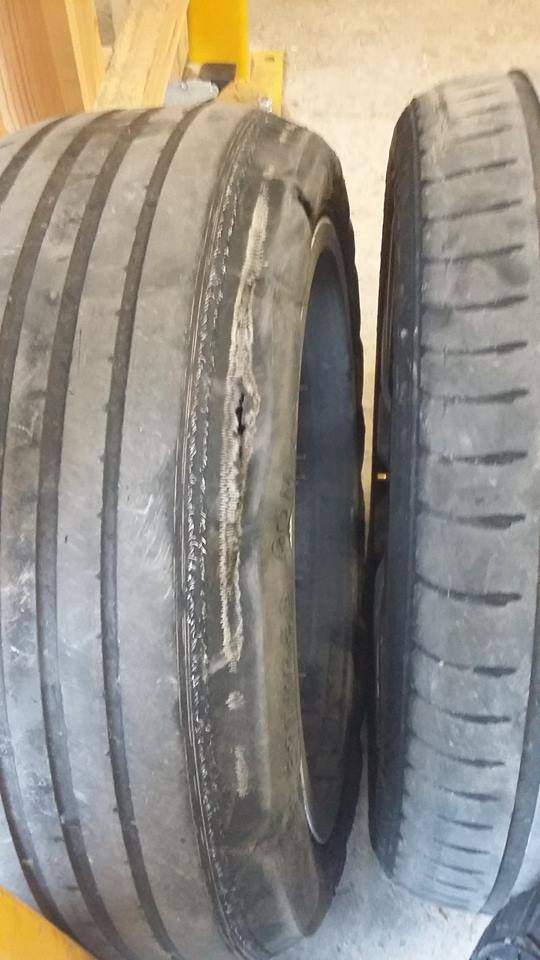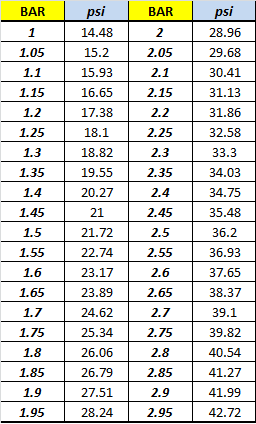Here Are Some Quick And Easy Steps To Follow.
Are Your Tyres Safe And Legal? It seems like a daunting task that may turn out to be expensive.
Never fear, here are a few things that you can check. They are really quick and easy – even if you’re not even that car savvy.
Because your tyres play such a vital role, there are some very important and specific legal requirements relating to their condition and maintenance:
- Tyres must be inflated correctly to the vehicle manufacturer’s and the tyre manufacturer’s recommendations.
- Tyres must be free from defects which may put anyone in danger, they must also be fit for purpose.
Checking The Pressure Of Your Tyres.
First of all, tyre pressure guides can be found in a few places on your vehicle.
Most commonly it can be located on your ‘B’ pillar either on the driver’s side.
If there is no sticker on the door, you can usually find the specifications in the owner’s manual or in your fuel cap.
The correct psi is determined by the manufacturer of your vehicle and is different depending on the make and model of each vehicle.
You may need to work out your psi by doing a simple conversion from ‘bar’. The bar is most commonly displayed on the vehicles tyre pressure indicator.
Here is a simple conversion chart for you.
When you locate the pressure guide on your vehicle, you will find that pressure varies depending on the weight of the load within your vehicle. When you travel alone, the pressure needs to be different from when your vehicle is loaded with family and their luggage, hence the different recommendations.
Example:
In this picture, you can see A and B.
A recommends up to 3 passengers, and B recommends over 3 passengers
In this next picture, we can see that your vehicles required ‘bar’ is different depending on weight in your vehicle. How many passengers you are carrying, how much luggage do they have?
Now That Your Tyre Pressure Is Correct:
Are your tyres actually legal to be on the roads?
How much will I be fined if they are illegal?
Well, the penalty for illegal tyres is a fine of up to £2,500 and three penalty points per illegal tyre. Therefore you could be faced with a £10,000 bill and 12 points if all four tyres were found to be illegal. Ouch!
Here are Milner’s quick tips to keep you from that hefty fine, or even worse – an accident!
Tread Depth and Legal Tyre Limits.
The minimum legal limit for tread depth on your tyres is 1.6mm.
On most tyres, you can find wear indicators.
There should be an arrow on the side of the tyre wall pointing to where the raised marker within the treads will be, like below.
Alternatively, you can buy yourself a tyre depth gauge online, or in most local motor factors.
The legal limit for minimum tread depth on your tyres in the UK is 1.6 millimetres, across the central ¾ of the tread around the complete circumference of the tyre.
Here is a horrendous example of illegal front tyres that we changed for a customer. This could have caused disastrous consequences:

As you can see the tread is barely there and you can see the cord within the tyre.
Did you know that at a tread depth of only at 1.6 millimetres in wet weather it takes an extra two car lengths (8 metres) to stop at 50 mph than if your tread was 3 millimetres.
Defects:
It isn’t just tyre pressure and lack of tread that can cause an accident.
Common defects can be:
- Lumps or egg type bulges.
- Tears in the tyre wall, potentially caused by potholes.
- Tears across the tyre tread.
- Tyre cord being visible.
Hopefully, after reading this, you will be a bit more aware of tyres and tyre safety.
Safe journeys everyone.
Don’t forget Milner’s can get most makes and sizes of 4×4 tyres for a wide range of vehicles. With amazing prices like ours, why not give us a call for a quote today?
Shop here for Tyres: BUY TYRES
Telephone us on 01629 734411 or pop us an email to sales@milneroffroad.com
By Harriet Johnson

-min.png)



.JPG)
.JPG)